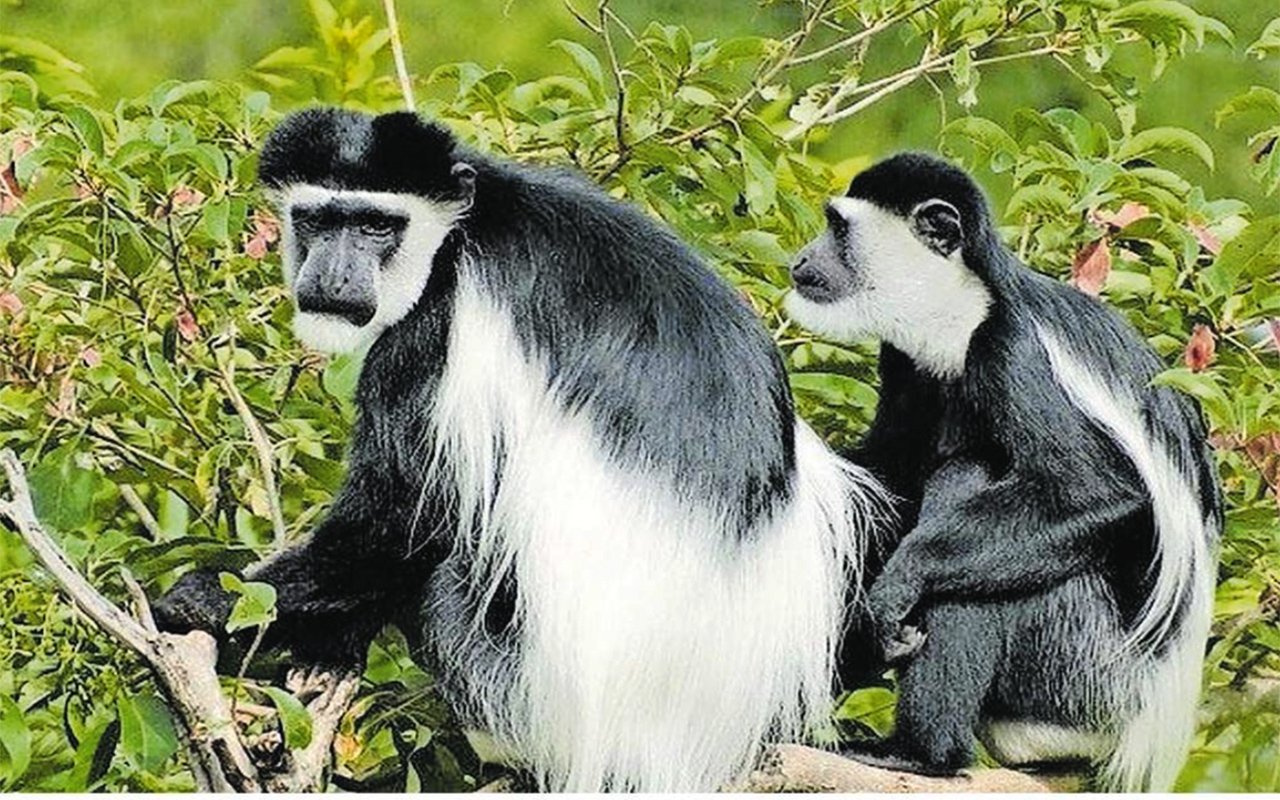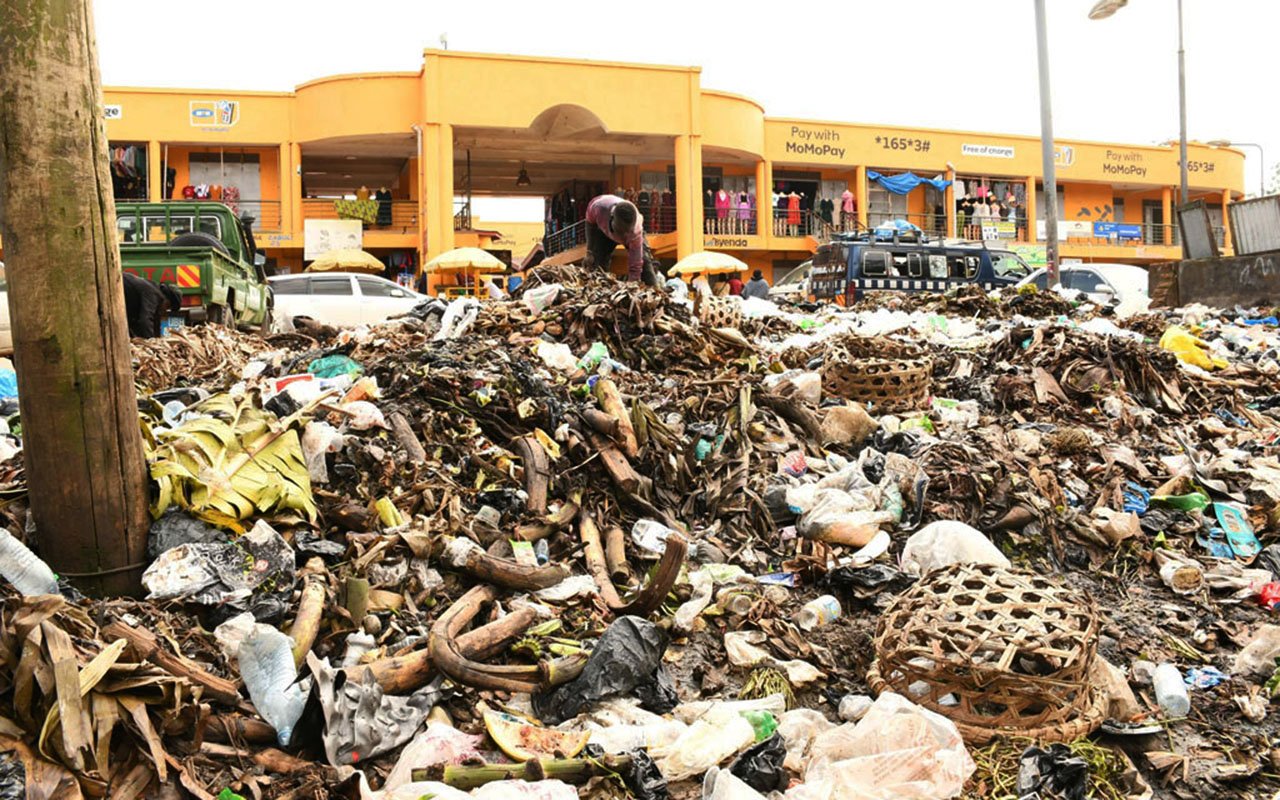Bamasaba culture, deforestation are leading to the decline of the colobus monkey

The black and white Colobus monkeys.
What you need to know:
- Monitor found out that on average, ten people are arrested by UWA every month over cutting down trees and other human related encroachments.
Black and white Colobus monkeys, a rare species of monkeys in the world, are on the brink of extinction in Mt Elgon National Park due to imbalu, a traditional male circumcision ritual among people living on the slopes of Mt Elgon, and deforestation.
The monkeys, believed to now number only 205, are commonly found in the forested areas of the park, particularly in higher altitudes where the dense forest provides ample food and cover from predators and poachers. They are also spotted along the trails leading to the park's peaks, waterfalls and caves such as, the Kapkwai, Sasa, Bushiyi trails.
The Colobus monkey population has been in steady decline over the past three decades due to pressures from habitat loss and poaching by the adjacent communities due to their cultural attachment.According to field reports seen by Sunday Monitor from staff of Uganda Wildlife Authority (UWA) who conduct patrols, it is estimated about 40-50 Colobus monkeys are killed every year.
Culture vs conservation
Peter Gusolo, an elder from Luganya clan in Elgon County, Bulambuli district, says the monkeys are highly valued by the Bamasaaba communities in Uganda and Kenya for their cultural significance.“We consider the Colobus monkey to be a sacred animal whose hide and coat are believed to have clothed Masaba, the first Mugisu man. That skin is also a symbol of honouring the spirit of Masaba and a call to strengthen the boy child through the imbalu tradition,” he says.
The Imbalu fete, which marks the initiation of boys into manhood, is held every even year among the Bamasaaba, who hail from the districts of Mbale, Namisindwa, Bududa, Bulambuli, Manafwa, and Sironko.
The ritual is said to have started around 1801 when the circumcision was conducted during odd years. By 1920, the ceremony was held every even year to give parents sufficient time to plant the food that was to be eaten during for the celebrations. A fresh Colobus monkey hide is sold at Shs150,000.
The hide is bestowed on the head of a boy waiting to be circumcised while the test is tied onto the stick. Both are used in a ritual dance the circumcision candidate performs.
Gusolo, however, explains both attires are reusable and therefore, white monkeys are not disappearing because of being hunted by traditionalists.
“This culture has been passed down from generation to generation for almost 200 years, but the monkeys have never gone extinct. This means our gods gave them to us for that purpose, otherwise, why are they on Mt Elgon? The people raising an alarm about extinction are foreign agents who are against our culture,” he says. Gusolo adds that the hide and tail of the Colobus money are washed in the dregs of malwa (local sorghum brew) after use and then, kept for the next imbalu season, every even year.“

Tourists and other local leaders accompanied by UWA officials visiting one of the caves in Mount Elgon National Park in 2020.
People only go into the forest to harvest honey, firewood, bamboo shoots and to worship their gods, not to kill animals as you have been led to believe,” he says. The monkeys feast on leaves and rarely descend to the ground. They use the trees as trampolines to lunge from one feeding location to another.
According to UWA, because the trees are being cut down at a fast rate, they cannot support the activities of the monkey, forcing them to forage on ground. This makes them vulnerable to hunters.
A park ranger, who preferred anonymity because he was not authorised to speak to the media, says, “At times, we intercept poachers carrying body parts of Colobus monkeys such as, the tails, skins and flesh. The poaching is done all year round by the communities living near the park.”
The residents who live near the part worry that if they abandon the use of monkey skins during the imbalu ritual, their gods will be angry with them and will wreck havoc on them.
“UWA should provide us with artificial attires resembling the skins and tails of the Colobus monkeys if they do not want the monekys to be hunted and killed. If they do not provide alternatives, they should not restrict us in the practice of our culture,” says Agnes Nambozo, a resident of Bufumbo sub-county in Mbale district.

Leaders and locals during the tour of Mt Elgon National Park in 2020. Photo/Fred Wambede
Emmanuel Masina, the Community Conservation Ranger for Mt. Elgon National Park, says the dense forests and rugged terrain of the park are a challenge to routine patrols in remote areas, especially at night.
“The landscape makes it hard to detect and apprehend poachers in action. Unfortunately, the poachers receive support from local communities who are in need to animal skins, making it hard for authorities to track them down,” he says.
Masina adds that the predictable movement patterns of Colobus monkeys make them easier targets for poachers who force them to the ground using traps or snares. “Their thumb-less hands limit their ability to escape from traps quickly,” he says.
White monkeys do not have a distinct breeding season, although most mating probably occurs during the rainy season. On average, a female will give birth once every 20 months. Newborns have a pink face and are covered with white fur.
At about one month they gradually begin to change colour, finally gaining the black and white adult coloration at about three months.“Infants are carried on their mother’s abdomen where they cling to the fur. The infant mortality rate is high even though the young ones are carefully tended to.
Once they reach seven months, they begin playing with juveniles. The games they play exercise their bodies, and as they get older, these develop into wrestling matches and mock displays,” Masina says.
Stephen Masiga, the spokesperson of Inzu Ya Masaba cultural institution, says there is no legal framework to prevent people from hunting the black and white Colobus monkeys.
"No law prohibits Bamasaba from hunting, eating and using skins of monkeys. You know very well that the Bamasaba eat monkeys and there has never been any outbreak of any disease related to eating monkey meat or wearing its skin," he says.

Tourists and other local leaders accompanied by UWA officials visiting one of the caves in Mount Elgon National Park in 2020.
Masiga adds that UWA does not have the census of monkeys in the entire sub-region and has not established the life span of Colobus monkeys to tell whether natives are killing young ones.
"UWA does not want the Bamasaba staying near the forest and is using such allegations to prepare the grounds of sending them away. However, monkey skins are long lasting and are hired by locals from one region to another. Has UWA established why the monkeys have not gone extinct since the Bamasaba started living near the park?" he asks.
Samuel Amanya, the chief warden of the Mt Elgon Conservation Area, says UWA has now placed a ban on the use of skin animals and other products from white monkeys.
"We have not given anybody permission to hunt and later utilise the skin of black and white Colobus monkey despite the animal being of significant importance to the cultural values of people in the Elgon sub-region. The species are a major tourist attraction in Mt Elgon National Park," he says.
Amanya adds that UWA is continuing with its sensitisation campaigns on the significance of the Colobus monkey to the tourism sector.
“We will continue arresting and prosecuting all poachers. We appeal to industrialists to work with the cultural institution to manufacture look-alike skins and hides for them to wear during their rituals,” he says.
Mt. Elgon Reserve was established in 1968 and is found on the Uganda - Kenya border. In 1993 Mount Elgon was gazetted as a national park. A visit to Conservation Area shows that several ecosystems are being degraded across the mountain.
Frontline communities at the slopes of Mt Elgon poach, hunt and put up settlements inside the park, claiming ownership of the land.
Statistics from UWA indicate that deforestation has so far left a total of 1,935 acres of land cleared in Namisindwa, Bududa, Kween, Bukwo and Sironko districts.
Monitor found out that on average, ten people are arrested by UWA every month over cutting down trees and other human related encroachments.
The high rate of deforestation in the park, which is endangering both the fauna and flora, is leading to climate-related disasters in the sub-region such as, floods, loss of soil fertility and drying rivers.
Colobus monkeys play a critical role in seed dispersal and maintaining the health of the ecosystem. In attracting tourists, they also contribute to the local economy through ecotourism and nature walks in the park.
Produced by Nation Media Group in partnership with the Bill ad Melinda Gates Foundation.




